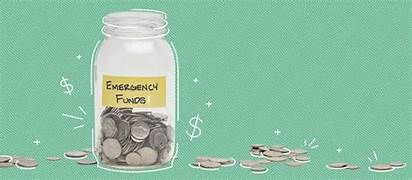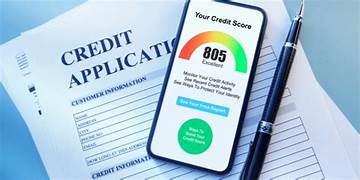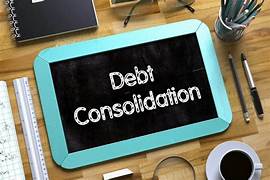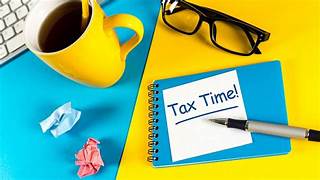How to Start an Emergency Fund from Scratch
Life is unpredictable. No matter how much we plan, unexpected expenses always seem to pop up—whether it’s a sudden car repair, an unexpected medical bill, or losing a job. This is where an emergency fund comes into play. Having a financial cushion to fall back on can help you navigate these rough patches without derailing your financial stability.
Starting an emergency fund from scratch might seem like a daunting task, but it’s a crucial step toward securing your financial future. The good news is that even small steps can make a big difference over time. This guide will take you through the process of starting an emergency fund, from setting a goal to building your fund consistently. So, let’s break down how you can get started and work your way towards financial peace of mind.
1. Why You Need an Emergency Fund
Protects You from Financial Setbacks
Having an emergency fund is essential because it gives you the peace of mind knowing that you have money set aside for emergencies. Whether it’s a medical expense, car trouble, or job loss, your emergency fund acts as a financial safety net that prevents you from going into debt when life throws you a curveball.
Prevents Debt Accumulation
Without an emergency fund, many people are forced to rely on credit cards or loans to cover unexpected expenses. This can lead to debt accumulation and high interest rates, which can be difficult to pay off. By having an emergency fund, you can avoid using credit cards for emergencies and keep your finances in check.
2. Set a Clear Goal for Your Emergency Fund
How Much Should You Save?
The first step in building an emergency fund is setting a clear savings goal. The ideal amount for your emergency fund varies depending on your circumstances, but a common recommendation is to save three to six months’ worth of living expenses. This means that if your monthly expenses (rent, utilities, groceries, etc.) total £2,000, you should aim to save at least £6,000 to £12,000.
Start Small if Necessary
If the goal feels overwhelming, start with a smaller target—maybe just £500 to £1,000. The key is to get started and build momentum. Once you hit your initial goal, you can continue to increase the amount until you reach your ideal emergency fund size.
3. Assess Your Current Financial Situation
Take a Close Look at Your Income and Expenses
Before you start saving, it’s essential to have a clear understanding of your financial situation. Take the time to assess your monthly income and expenses. Identify areas where you can cut back, such as unnecessary subscriptions, dining out, or impulse purchases. This will help you free up money to allocate toward your emergency fund.
Create a Budget
A budget is a powerful tool that can help you manage your money effectively. By creating a budget, you can allocate a set amount of money each month toward building your emergency fund. It also ensures that you’re prioritising savings over non-essential spending, which is crucial when trying to save for an emergency fund.
4. Open a Separate Savings Account
Keep Your Emergency Fund Separate
To avoid spending your emergency fund on everyday expenses, it’s important to keep it in a separate account. Consider opening a high-yield savings account or an online savings account that offers better interest rates. Having a separate account will help you track your progress and prevent you from dipping into the fund for non-emergencies.
Look for Accounts with No Fees
When selecting a savings account, make sure it has no monthly maintenance fees or minimum balance requirements. You want an account that allows you to deposit and withdraw money easily, without the hassle of fees eating into your savings.
5. Start Small, but Start Consistently
Set a Realistic Savings Amount
You don’t need to save large amounts every month to make progress. Even if you can only put aside £50 or £100 each month, the important thing is to start consistently. Over time, these small contributions will add up. The key is to develop the habit of saving regularly, even if the amounts are modest at first.
Automate Your Savings
One of the easiest ways to ensure you’re saving consistently is by automating your savings. Set up automatic transfers from your main checking account to your emergency fund savings account each month. This way, you won’t have to remember to transfer the money manually, and you’ll be less tempted to spend it.
6. Look for Ways to Boost Your Savings
Cut Back on Non-Essential Spending
When you’re starting an emergency fund, every little bit helps. Look for ways to cut back on unnecessary expenses, such as cancelling subscriptions you don’t use, cooking more at home instead of dining out, or limiting impulse buys. Redirect these savings into your emergency fund to help it grow faster.
Increase Your Income
If possible, find ways to boost your income to accelerate your savings. This could mean taking on a part-time job, freelancing, or selling items you no longer need. Any extra income you earn can go directly into your emergency fund, helping you reach your goal more quickly.
7. Track Your Progress
Celebrate Small Wins
As you start saving for your emergency fund, it’s important to track your progress. Set milestones along the way, such as saving £1,000, £3,000, or £5,000, and celebrate each achievement. This will keep you motivated and help you stay on track to reach your final goal.
Adjust Your Plan if Necessary
If you encounter financial setbacks or find it difficult to save a set amount each month, don’t be discouraged. Life happens. Adjust your savings plan if needed, but make sure to keep moving forward. Even if you can only save a smaller amount for a while, it’s still progress.
8. Avoid the Temptation to Dip Into Your Fund
Treat It as a Last Resort
Your emergency fund is there for emergencies, not for non-essential spending or planned purchases. It’s important to resist the temptation to dip into your fund for things like vacations or new gadgets. Only use your emergency fund for situations that genuinely qualify as emergencies, such as medical bills, car repairs, or job loss.
Replenish the Fund If You Use It
If you do have to dip into your emergency fund, make it a priority to replenish it as soon as possible. This will ensure that you’re always prepared for the next unexpected event that comes your way.
9. Keep Your Emergency Fund Safe and Accessible
Don’t Make It Too Hard to Access
While it’s important to keep your emergency fund separate from your regular spending money, it should still be easy to access in case of an emergency. Choose a savings account that allows for quick withdrawals or transfers, so you’re not waiting around for days when you need the money the most.
Reevaluate Your Fund Periodically
As your financial situation changes, your emergency fund needs may also change. For example, if your living expenses increase due to moving or having a family, you might need to increase your emergency fund to cover those new costs. Regularly review your savings and adjust as necessary.
10. Stay Committed and Be Patient
Building Your Emergency Fund Takes Time
Starting an emergency fund from scratch won’t happen overnight, but if you stay committed to the process and remain patient, you’ll see the results. Financial goals take time, but the key is consistency and dedication. The longer you stick to your plan, the closer you’ll get to having a fully funded emergency fund that gives you peace of mind.
Stay Motivated by Your Goals
Whenever you feel discouraged or tempted to spend the money you’ve saved, remind yourself why you’re doing this. The security and peace of mind that come with having an emergency fund are worth the effort and sacrifice. Stick with it, and soon enough, you’ll have a safety net that helps you weather life’s financial storms.
Conclusion
Building an emergency fund from scratch is a crucial step in achieving financial security. By setting clear goals, tracking your progress, and staying disciplined, you can create a financial cushion that will protect you in times of crisis. It may take time, but with persistence and smart planning, you’ll have the peace of mind that comes with knowing you’re financially prepared for the unexpected.
FAQs
1. How much should I save in an emergency fund?
A good rule of thumb is to save three to six months’ worth of living expenses. However, if you’re just starting, even £500 to £1,000 is a solid goal.
2. Can I use my emergency fund for things like vacations?
No, your emergency fund should only be used for true emergencies, such as medical bills or car repairs. Save for vacations separately.
3. How quickly should I build my emergency fund?
It depends on your circumstances, but aim to save at least £500 in the first few months and gradually increase it until you reach your full target.
4. What’s the best account to keep my emergency fund in?
A high-yield savings account or an online savings account is a great option because they offer higher interest rates than regular savings accounts.
5. Can I use my emergency fund if I lose my job?
Yes, losing a job is one of the key reasons to have an emergency fund. It can help cover your living expenses while you look for new employment.
6. What if I need to dip into my emergency fund?
If you use your emergency fund, try to replenish it as soon as possible to ensure you’re prepared for future emergencies.
7. How can I stay motivated to save for my emergency fund?
Set small, achievable goals and celebrate each milestone. Visualise how your emergency fund will provide peace of mind in the future.






